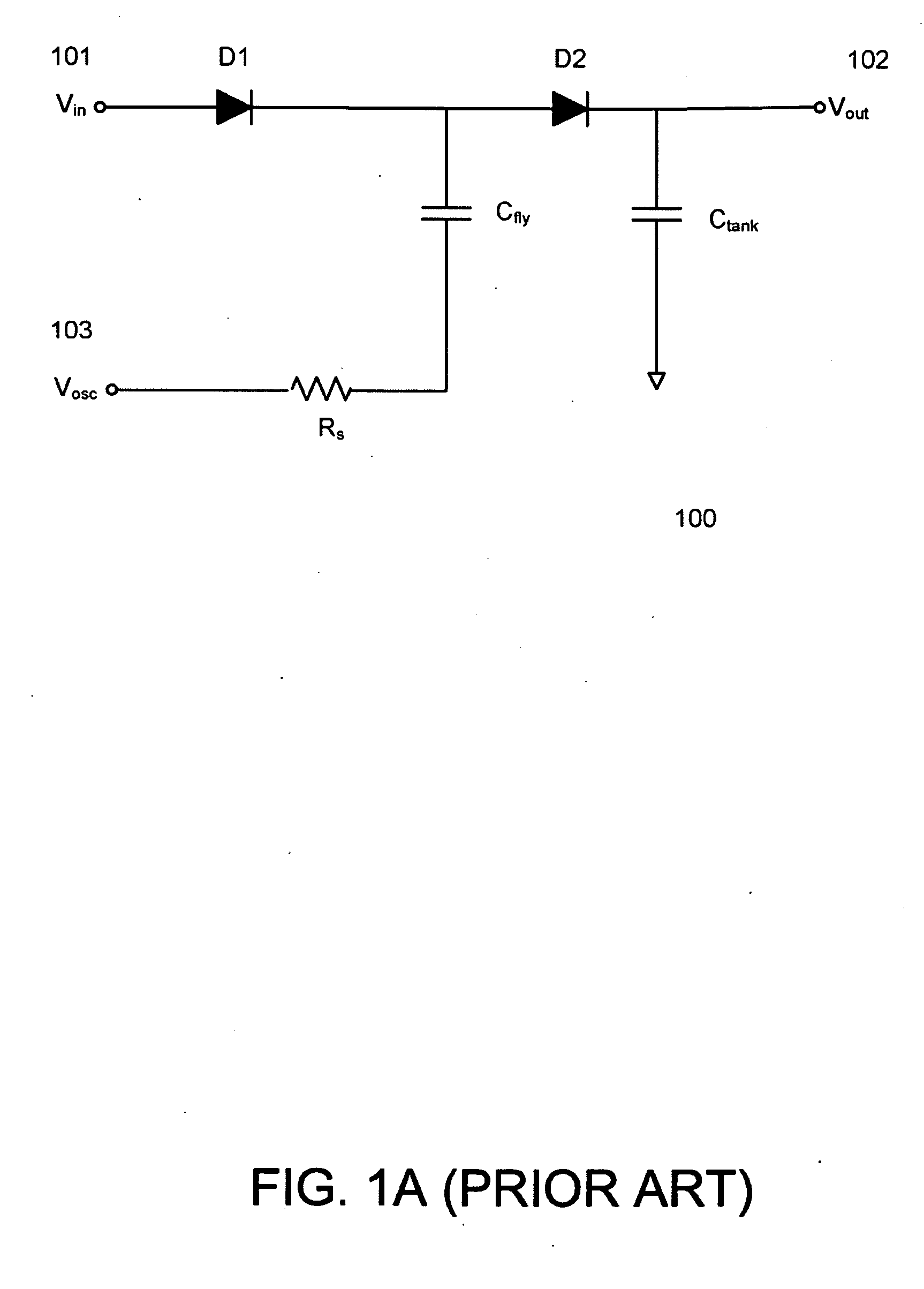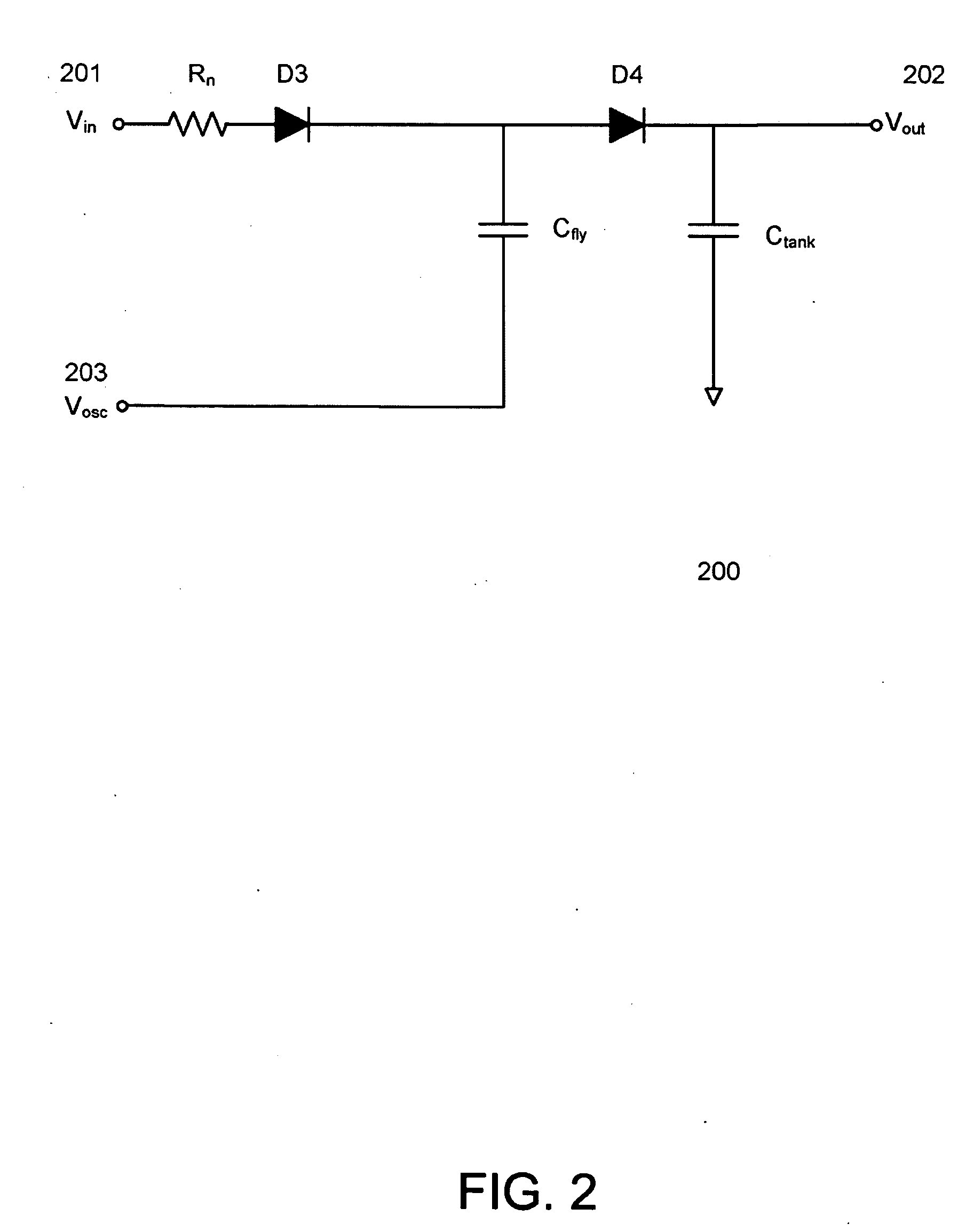Power efficient charge pump with controlled peak currents
a charge pump and peak current technology, applied in the field of charge pumps, can solve the problem of excessive in-rush currents
- Summary
- Abstract
- Description
- Claims
- Application Information
AI Technical Summary
Problems solved by technology
Method used
Image
Examples
Embodiment Construction
[0015]A charge pump of the present invention may overcome the disadvantages noted above by using its peak current limit resistor to limit its in-rush current. The peak current limit resistor may be removed from the discharging current path of the flying capacitor and put between the input voltage source and the flying capacitor. An additional advantage of such a charge pump is that, when being coupled to a boost converter or other switching regulator utilizing an inductor, it may avoid unnecessary power dissipation caused by the peak current limit resistor when the flying capacitor receives energy from the inductor.
[0016]FIG. 2 is a circuit schematic depicting a charge pump according to one embodiment of the present invention. As shown, an input node 201 of a charge pump 200 may be coupled to an input voltage source Vin. The charge pump 200 may provide an output voltage Vout at its output node 202. A current limit resistor Rn and diodes D3 and D4 may be coupled in series between the...
PUM
 Login to View More
Login to View More Abstract
Description
Claims
Application Information
 Login to View More
Login to View More - R&D
- Intellectual Property
- Life Sciences
- Materials
- Tech Scout
- Unparalleled Data Quality
- Higher Quality Content
- 60% Fewer Hallucinations
Browse by: Latest US Patents, China's latest patents, Technical Efficacy Thesaurus, Application Domain, Technology Topic, Popular Technical Reports.
© 2025 PatSnap. All rights reserved.Legal|Privacy policy|Modern Slavery Act Transparency Statement|Sitemap|About US| Contact US: help@patsnap.com



